Anglers Booking Team
The expert copywriters at Anglers Booking have meticulously crafted this article. Our dedicated team of writers provides valuable insights and information to enhance your angling experience.
 11 minutes read
11 minutes readRedfish, also known as Red Drum, is among the most sought-after species for inshore anglers along the U.S. coast. Their combination of fight and accessibility makes them a top choice for all anglers. This fish also has value in the culinary world. Redfish are highly adaptable, offering anglers various ways to catch them. Their unique coppery hue and characteristic black spot on the tail make them a fascinating species to target.
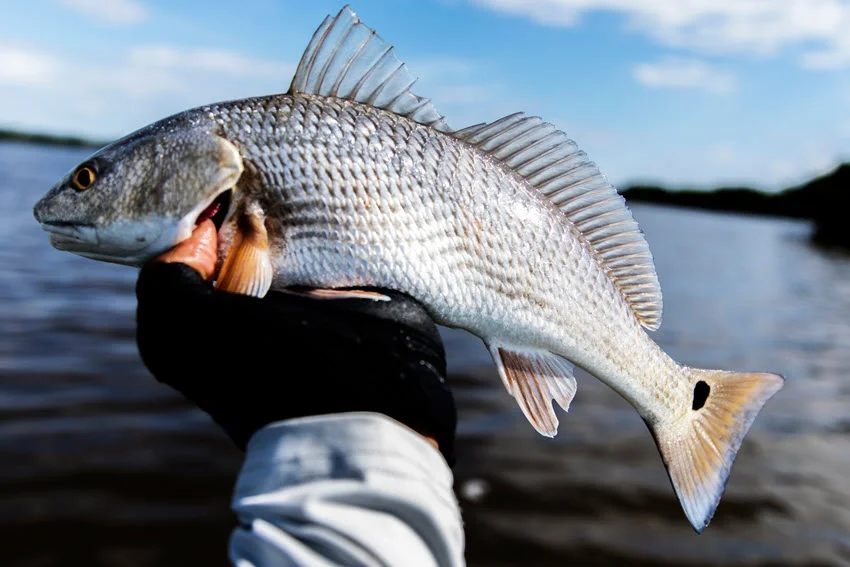
Understanding the behavior of Redfish, distinguished by their unique coppery hue and characteristic black spot on the tail, is key. They vary in size, from smaller ones to massive Bull Reds, providing a real challenge. Knowing the best seasons, locations, and techniques to catch these versatile fish is crucial to maximizing your fishing experience. This knowledge will make you feel more prepared and increase your chances of a successful catch.

Redfish is a prominent inshore game fish. It can be found along the Atlantic coast from Massachusetts to Florida. Also, they are present throughout the Gulf of Mexico.
Adult Redfish typically measure between 20 and 40 inches in length. Their average weight ranges from 5 to 40 pounds but can grow larger under favorable conditions. They experience rapid growth during the early years, but their growth rates slow as they mature. In the wild, Redfish can live up to 30 years. Of course, the variables depend on environmental factors and predation pressures.
Understanding Redfish's behavior and habitat is crucial for successful fishing. These fish inhabit various coastal environments, including estuaries, marshes, and shallow bays. They are bottom-oriented feeders, using their downturned mouths to forage for prey along the bottom of the substrate. Their diet primarily consists of crustaceans, such as shrimp and crabs, as well as small fish and mollusks.
The best time to target Redfish varies by region. Generally, late summer through early fall is considered the optimal time. During this period, mature Redfish move into shallower waters to spawn. Redfish are typically found at depths ranging from 2 to 6 feet in coastal areas like shallow bays, estuaries, and grass flats. During the spawning season or colder months, they may move to deeper waters of up to 30 feet. At places like this, they feed aggressively in preparation for spawning.
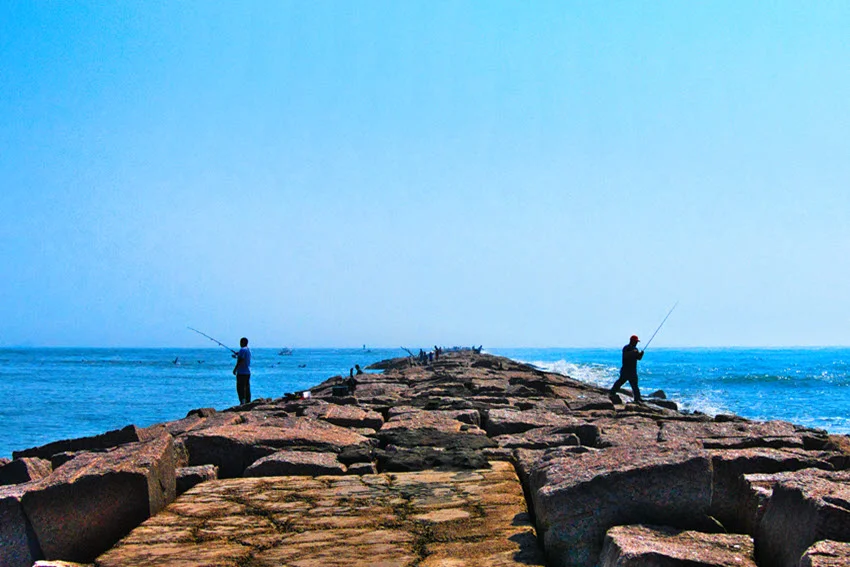
Timing is a crucial factor in successful Redfish fishing. Seasonal patterns, weather, and water conditions heavily influence these coastal predators. Understanding when to fish for Redfish can significantly enhance your chances. Below, we've discussed key factors for planning your Redfish fishing adventure.
Redfish fishing is most productive during specific seasons, and the exact timing varies by region. Understanding the local patterns is important.
During winter, Redfish seek warmer waters. This period is often found in shallow flats and creeks with muddy bottoms. They are also more likely to school up, making hooking multiple fish at once easier. Slow-moving, scented baits are most effective during this time.
Spring is an excellent time for Redfish fishing. It is especially effective on warmer days when the water temperatures rise. Mullet and shrimp become abundant in the waters, making Redfish more active and aggressive.
Although Redfish are active in the summer, the heat can drive them to deeper waters. In particularly hot months (July and August), expect them to move near docks, jetties, and other structures that provide shelter from the sun.
Fall is often considered one of the best times for Redfish fishing. With winter approaching, these fish enter a feeding frenzy to bulk up for the colder months. They push into shallow waters to gorge on shrimp and other baitfish. Areas with mullet runs, like Florida's East Coast in September and October, are prime locations during this time.
Early morning and late afternoon are the most productive periods when Redfish feed closer to the surface. These times coincide with optimal light conditions. Avoid fishing during midday heat, especially on sunny days when fish retreat into deeper waters to escape the heat.
Tidal movements are key when fishing for Redfish. Rising and falling tides stir up the water, oxygenating it and bringing baitfish closer to shore.
Redfish are often found near current breaks, rip lines, and areas where tides push baitfish toward structures, such as inlets, reefs, and drop-offs. Paying attention to the tidal schedule and fishing during the right phases can improve your chances of a successful catch.
Regarding Redfish fishing, Florida stands in a league of its own. Thanks to its access to the Atlantic Ocean and the Gulf of Mexico, the state offers an incredible variety of inshore habitats. Florida's coastline is a haven for Redfish all year-round, from shallow flats and winding creeks to expansive lagoons and lush mangroves.
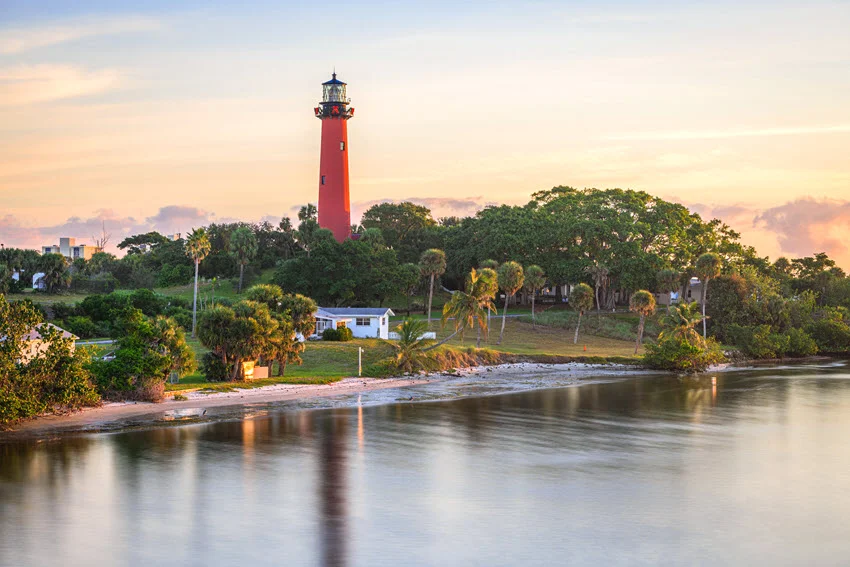
Jupiter, Florida, lives up to its name in terms of out-of-this-world Redfish fishing. This town has access to rich waterways like Jupiter Inlet, the Intracoastal Waterway, and the Loxahatchee River.
It offers incredible year-round fishing opportunities. Mild winters keep the fish active, and the surrounding structure provides ideal cover and feeding grounds for Redfish in all seasons.

Mosquito Lagoon is nestled within Florida's Indian River Lagoon System. It has the nickname "Redfish Capital of the World." The calm, marshy waters here are home to impressive numbers of Redfish throughout the year.
The chances of landing a solid catch are high. The shallow flats and maze of grass beds make this a favorite among seasoned Redfish anglers.

Though better known for its offshore deep-sea action, Destin offers excellent inshore Redfish opportunities. The shallow waters of Choctawhatchee Bay are a hotbed for Reds throughout the year.
Whether fishing the grassy shorelines or dock-lined channels, anglers will have plenty of chances to hook into fish without venturing into the open sea.

Cocoa Beach sits close to the productive inshore channels of the Banana River and the larger Indian River Lagoon System. These brackish environments are teeming with life, drawing in Redfish year-round.
In addition, anglers can explore the nearby Thousand Islands, a tangled network of mangrove-lined islets that support healthy populations of baitfish and crustaceans – prime Redfish food.

Tampa Bay is one of Florida's most productive Redfish hotspots. The fish are here year-round, but activity peaks in early spring and again in late summer to early fall. During March, Redfish move in large numbers to feed on mullet as they migrate through the area.
A second surge happens around September, when mature fish gather for spawning. From oyster beds to mangrove channels, Tampa offers a variety of experiences and consistency.
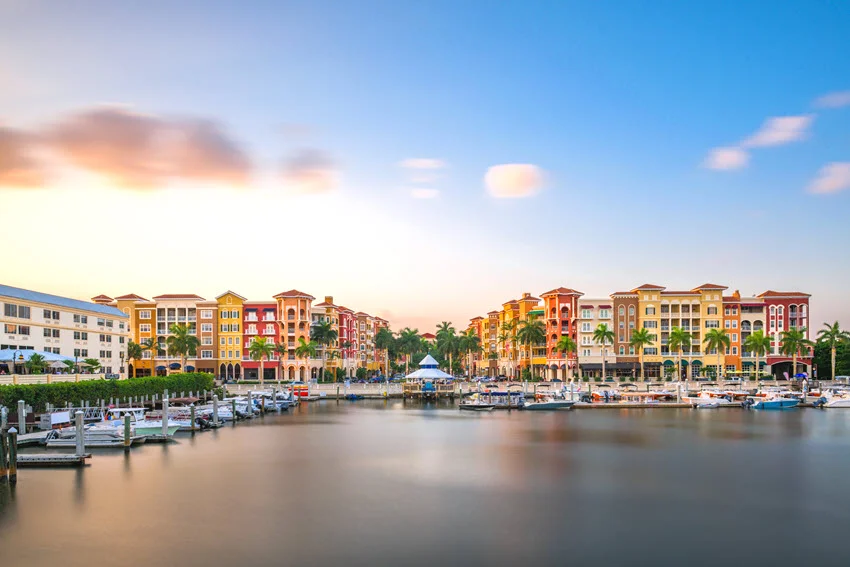
Naples is a Redfish paradise comprising winding mangrove tunnels, expansive shallow flats, and calm inland canals. This area provides perfect ambush spots for Redfish and quick access to larger fisheries, such as the Ten Thousand Islands and Marco Island.
These regions support massive populations of Redfish throughout the year, making Naples a strategic base for inshore anglers.

Charleston is a hidden gem for Redfish anglers along the Atlantic coast. During summer, sight fishing in shallow flats is incredibly popular. During this period, schools of tailing Redfish become more active.
In the colder months, larger Bull Reds retreat into deeper channels but are still within reach. Prime fishing spots include the Wando River, Ashley River, and the intricate maze of estuaries around the Charleston Harbor. Charleston provides year-round opportunities for anglers of all levels.

Port O'Connor is a strategic gateway to some of Texas's most legendary inshore fisheries. It is positioned between Matagorda Bay and Espiritu Santo Bay. Also, it is close to Port Aransas and Corpus Christi Bay. This town offers anglers countless Redfish opportunities. The maze of shallow flats, oyster reefs, and bayou channels holds impressive numbers of fish. It's a prime area for trophy-sized Reds.
The best months for catching Redfish here are September through November. These months, Red Drums make their spawning run and are easier to target in passes, jetties, and deeper cuts. Spring and early summer (March to June) are also productive.

New Orleans is not famous for its food and music. It is also a top-tier Redfish destination. The surrounding bayous, marshes, and estuaries form one of the richest Redfish ecosystems in the country.
Thanks to Louisiana's mild winters, fishing remains productive even in the colder months. Anglers often encounter Bull Reds patrolling shallow waters, especially near river deltas and grass flats.

Orange Beach is located in the heart of Alabama's inshore fishing zone. The abundance of shallow waters is the main reason why Redfish thrive here. With Mobile Bay to the west, Perdido Bay to the east, the habitat diversity attracts Redfish every season.
Redfish can be caught year-round in Orange Beach. Still, the peak season runs from late summer through fall (August to November). At this period, the larger Redfish, aka Bull Reds, move closer to the shore during their spawning runs.
Redfish are known for their opportunistic feeding habits. That makes them a thrilling target for anglers. Catching them isn't just about the hook. It's about understanding their behavior and the proper techniques to use in different conditions. Below are some popular methods for targeting Redfish.

Sight fishing is an incredibly effective technique for targeting Redfish. It is particularly effective in clear waters where you can spot their distinct wake. Redfish create a "V" shaped wake when swimming, and they often swim, burying their heads and leaving their tails visible above the water. This makes it easier to track their movements.
When sight fishing, cast your bait three feet ahead of the fish. As the Redfish approaches your bait, twitch it slightly to mimic the natural movement of a prey fish. To entice the fish, experiment with different presentations, like twitching, hopping, or stop-and-go motions.
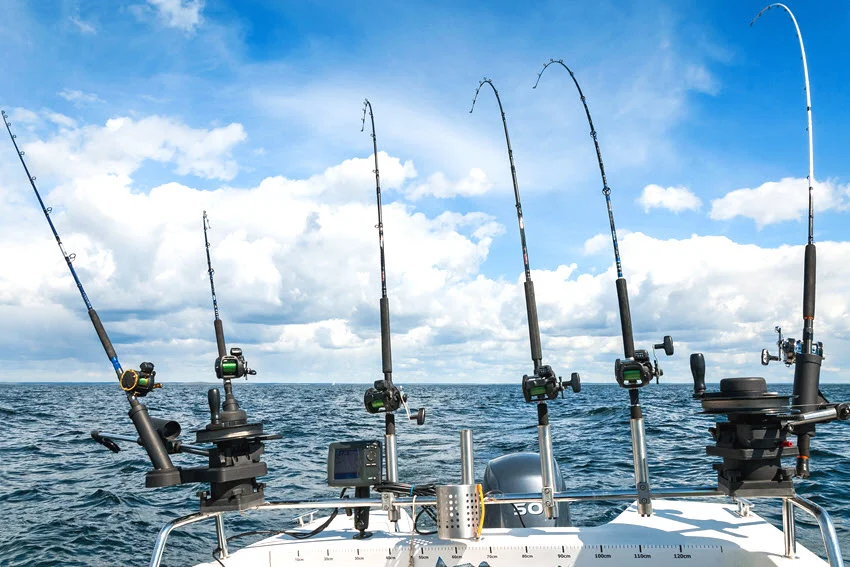
Trolling is a great way to cover a lot of water and easily find Redfish. You can use trolling rigs with live or artificial baits. This technique is effective in large bays and can also be successfully applied in coastal waters, where Redfish are actively feeding.
Keep an eye on the water temperature and conditions. Reds are often more active during certain times of the year. For instance, they may follow schools of baitfish or move to specific areas to spawn.
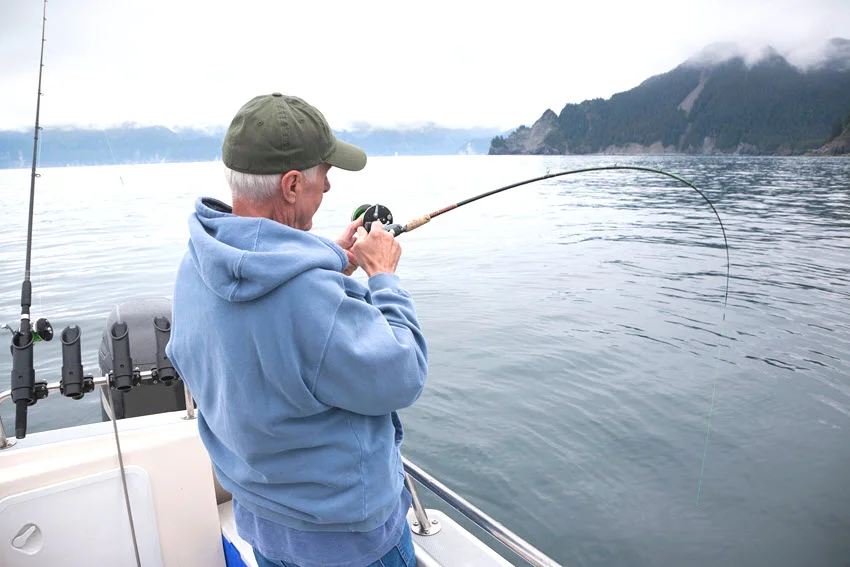
Jigging is ideal for targeting Redfish in deeper waters. Also, it can be effective when they are near the bottom. Using jigs that mimic the movement of injured fish can trigger a Redfish's predatory instincts. Drop your jig to the desired depth. Use a vertical movement to make it look like an easy meal. You can experiment with different jigging speeds and depths.
Jigging is especially effective around structures. These are places like underwater rocks, reefs, and drop-offs. Here, Redfish like to hide and hunt.

Popping corks are a popular tool for attracting Redfish. When used in shallow waters, the cork makes a distinct popping sound miming a distressed baitfish. This sound can attract Redfish from a distance.
Cast your line and let the cork float on the surface while periodically popping it to create movement and noise. This technique works well in areas with heavy vegetation and is also effective around mangrove roots.

Drift fishing is a relaxed technique in which you allow your boat to drift naturally with the current or wind while you cast your bait along the way. This method works well in areas with steady currents, like estuaries or large inlets. As you drift, your bait will move naturally with the water. It will mimic the motion of real prey and attract Redfish.

Fishing with live baits is an effective method for attracting larger Redfish. Standard live baits include mullet, shrimp, and finger mullet. Hitch the live bait through the lips or back to use this technique. Cast it into likely Redfish hotspots, such as drop-offs, oyster beds, or near submerged structures. Keep the bait alive and moving to trigger the Redfish's predatory instincts.

When targeting Redfish, choosing the right bait and lure is very important. Redfish are opportunistic feeders. That means they'll strike a variety of baits. However, matching the bait to the local environment and time of year can improve your chances. Be sure not to miss parts below.
Live baits are a top choice for many Redfish anglers. As opportunistic feeders, Redfish are not particularly picky. Matching your bait to the natural forage in the area is a smart move.
Standard natural baits for Redfish fishing include mullet, shrimp, crabs, and menhaden.
These lures work differently depending on the season. Shrimp and crabs are great in the summer and fall, and mullet and menhaden are effective in winter. Live bait is also perfect for fishing near structures, flats, and estuaries. At places like this, Redfish are known to feed.
Artificial lures can be just as effective as live bait. They are especially successful when Redfish are in aggressive feeding mode. The key is to use lures that mimic the natural movements of baitfish, along with bright colors. This way, you will catch their attention.
The best artificial lures for Redfish fishing include topwater jigs, rattling plugs, popping corks, and soft plastic lures. These lures are particularly useful when fishing in areas with low visibility or murky waters. Topwater jigs are great for shallow, grassy flats. Rattling plugs attract fish in deeper, murkier water. Popping corks are a fantastic choice for enticing Redfish hunting near the surface.
Color selection for lures is crucial when fishing for Redfish. Reds are attracted to bright, bold colors, and their preference can vary depending on the water clarity. Anglers recommend selecting colors, including yellow, green, white, bright oranges, and reds.
In addition to color, Redfish are also attracted by scent. Consider using scented oils to increase the effectiveness of your artificial baits.
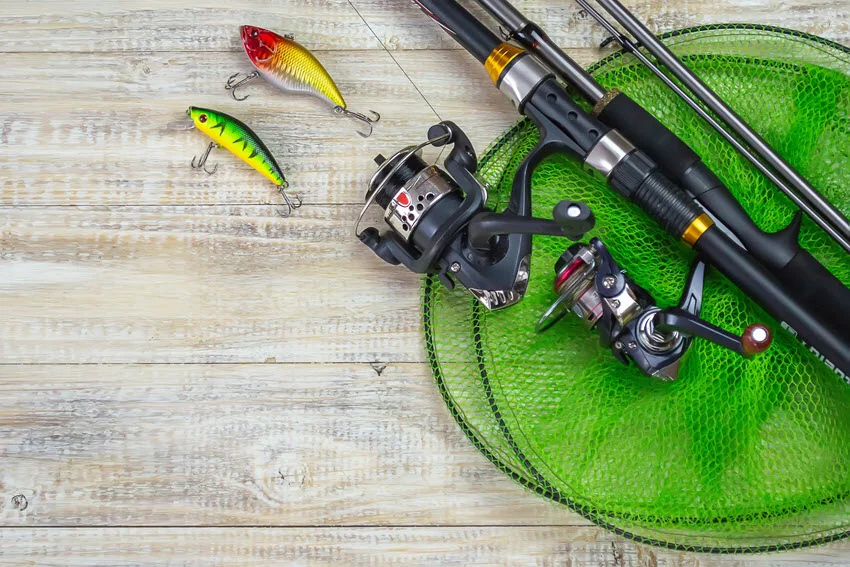
Choosing the right gear also depends on the size of the fish you are targeting. Water conditions also affect your gear selection. While the basics of inshore fishing are essential, fine-tuning your setup increases your chances of catching a catch. The key is to match your gear to the situation.
A lighter setup offers better sensitivity and casting control for smaller Redfish commonly found in shallow grass flats, creeks, and estuaries. A 7-foot medium or medium-light spinning or casting rod paired with a 3000 or 3500 size reel is a solid choice. Most anglers prefer to spool their reels with 10 pound braided line and use a 15 to 20 pound fluorocarbon leader for added invisibility and abrasion resistance.
Regarding rigging, jigheads around 1/8 ounce work great for bouncing natural or artificial baits along the bottom. Popping cork rigs are also effective. The Carolina rig remains a go-to option when presenting cut bait or shrimp near the bottom.
Targeting larger Redfish requires a more robust setup to handle their powerful runs. A 7-foot, medium-heavy spinning or baitcasting rod paired with a 4000 to 5000 size reel offers the strength and line capacity needed for these big fighters.
Anglers usually use 20 to 30 pound braided line with a 25 to 30 pound fluorocarbon or monofilament leader to withstand abrasion from rocks, oyster beds, or heavy vegetation. Heavier jigheads in the 3/8 ounce range or more are preferred for deeper water or stronger currents.
While Carolina rigs still excel at delivering large cut bait or live mullet on the bottom, fishfinder rigs are also popular when working structures like bridges and jetties. Even popping corks can attract attention in murky water, making them a surprisingly versatile tool for big Reds.

Understanding fishing regulations and preserving specific fish species contributes to protecting fish populations and ecosystems and promoting responsible angling practices.
Anglers Booking team
Redfish are subject to specific regulations, which aim to ensure the health of their populations. Below, we analyzed regulations and licenses related to fishing for Redfish.
Stay informed regularly. These rules may change over time. Adherence to these regulations is crucial for preserving this species and legal fishing.
We've reached the end of our adventure. As you can see, catching Redfish is more than ordinary fishing. It is a real adventure. It is crucial to follow the advice in this guide if you want a successful day of fishing. Remember that gear, right time, and right bait are "game changers" for Redfish fishing. Come prepared, stay flexible, and respect the fish and the environment.
Now, it is your turn! You are ready for a new fishing adventure. And what is your favorite place to fish for Redfish? What gear and bait do you use? We are happy to see your answers in the comments!

The expert copywriters at Anglers Booking have meticulously crafted this article. Our dedicated team of writers provides valuable insights and information to enhance your angling experience.
Embark on unforgettable fishing adventures with us at Anglers Booking.
book your charterOctober 17, 2025
October 15, 2025
October 10, 2025
October 11, 2025
October 4, 2025
September 29, 2025
September 25, 2025
September 21, 2025

You're now part of our exclusive community. Get ready for premium content and updates straight to your inbox.
close
Subscribe to our newsletter and receive a selection of cool articles every week.
Please enter a valid email address.

Be the first to know when we're back in action.
Please enter a valid email address.
Leave a Comment
Your email address will not be published. Required fields are marked *
Thank you for your comment! It has been submitted for review and will appear on the site shortly.